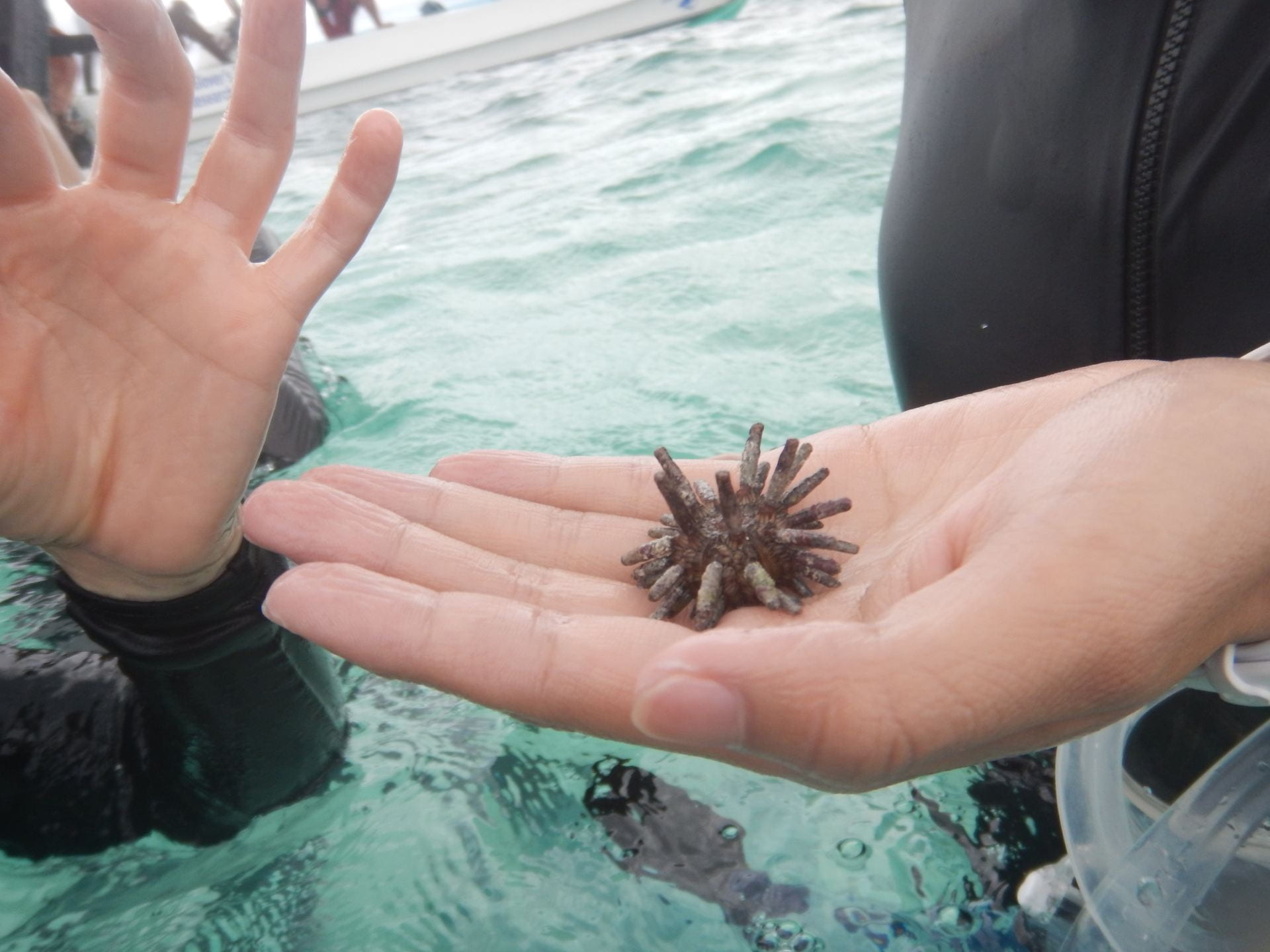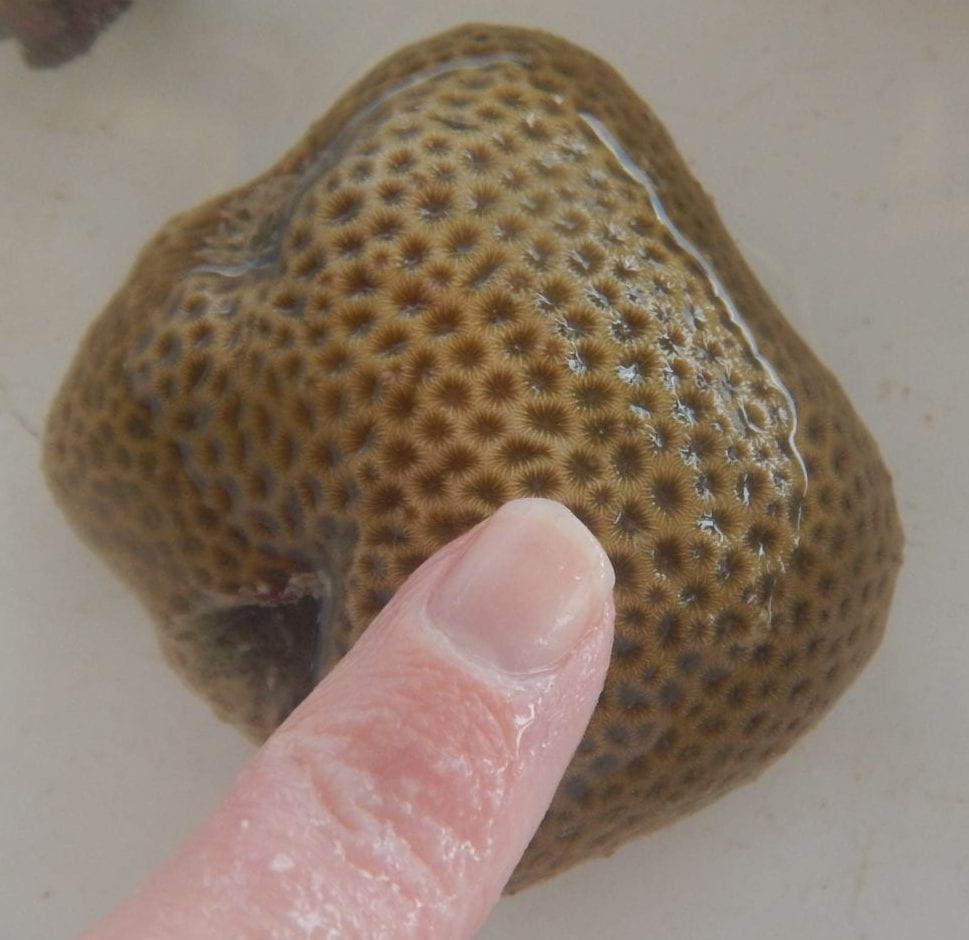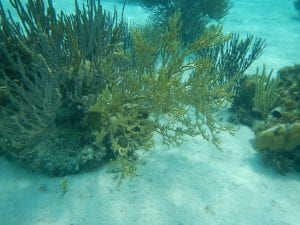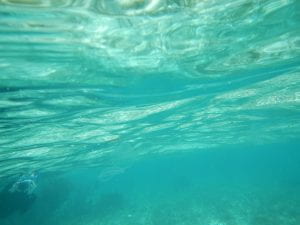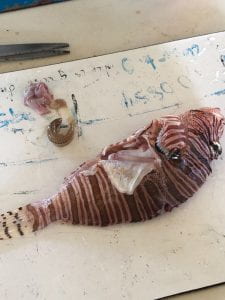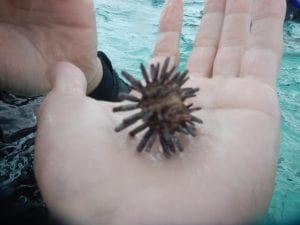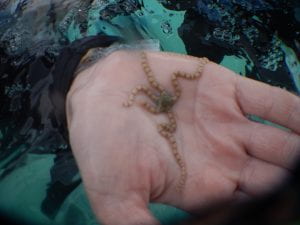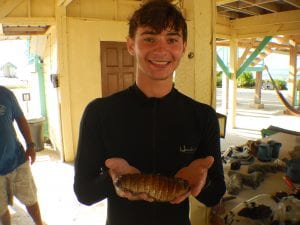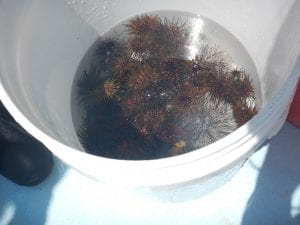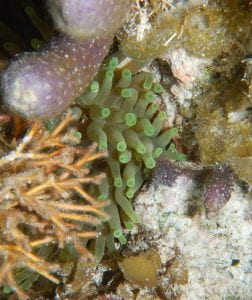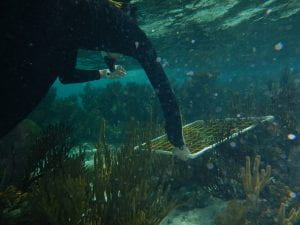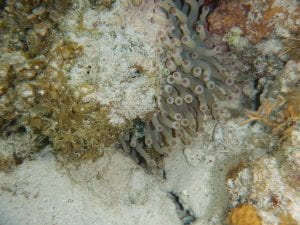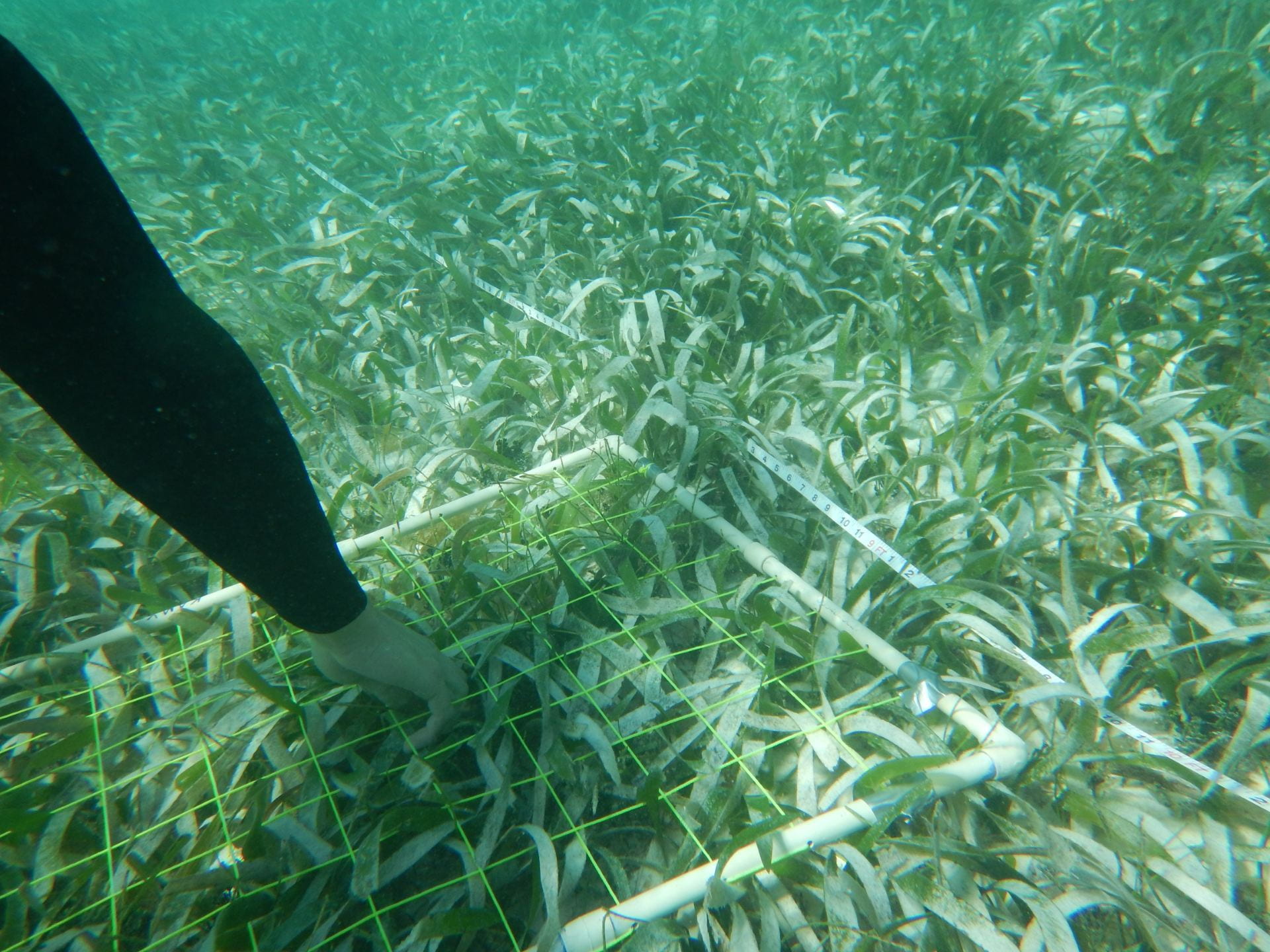This morning we combined a research project with an exercise in awareness, in addition to helping the island with a major problem. You see, an island that is in the middle of the ocean (not near shore) still, perhaps surprisingly, collects debris.
We split up into four groups and went to different sides of the island: The Dock, The Touch Tank (named such because we collected animals for a touch tank there on Day 11), The Coral Graveyard (where corals wash up on the shore; this is the windward side of the island), and an area we termed the Mangroves of Death. For some unknown reason—okay, because few people were willing to go—I went to pick up trash in the Mangroves of Death. For the uninitiated, Mangroves of Death are full of mosquitoes and also, in this case, sand flies. Our group of three students went out there to the jungle gym of mangroves and alternated picking up old rags, plastic bottles, plastic bags, and other trash and slapping ourselves to rid our skin of mosquitoes. Having anticipated this, I was covered except for my face. As it turns out, the sand flies didn’t care and bit me all over anyway, but the mosquitoes just clustered around my face. I tried to get them off with my arms, because I was using my hands to pick up trash and didn’t want to rub the dirt on my face.
The highest count of marine debris was at the Coral Graveyard, and we decided this could be caused by the fact that this was where trash would hit the island when the surface of the water was moving with the wind. However, the second highest count and the largest volume of trash was found in the Mangroves of Death. This was partly due to the large metal and foam boat pieces we found and dragged back with us. Another reason this could be the case is that the mangroves form a maze of roots that collects, in addition to water, trash. Trash becomes tangled in the roots, so we had larger pieces of trash in general, leading to a larger volume despite a slightly lower number of pieces. We also found mostly plastic. Despite 12 people spending half an hour collecting trash, we all felt like we hardly made a dent in the marine debris washed up on the island, despite the fact that the staff on the island regularly collect what washes up.

After lunch we dissected lionfish. Lionfish are invasive in the Atlantic (native to the Indo-Pacific) and have few predators here, so they proliferate and are destructive to competing carnivorous fish populations and eat young commercially harvested fish species. That could potentially have an impact on the fishing industry. We measured them (ours was 21.5 cm, or about 9 in, long) and pulled out the stomach. Ours looked pretty full but the contents were not identifiable. Another group found a whole fish in the stomach of their lionfish.
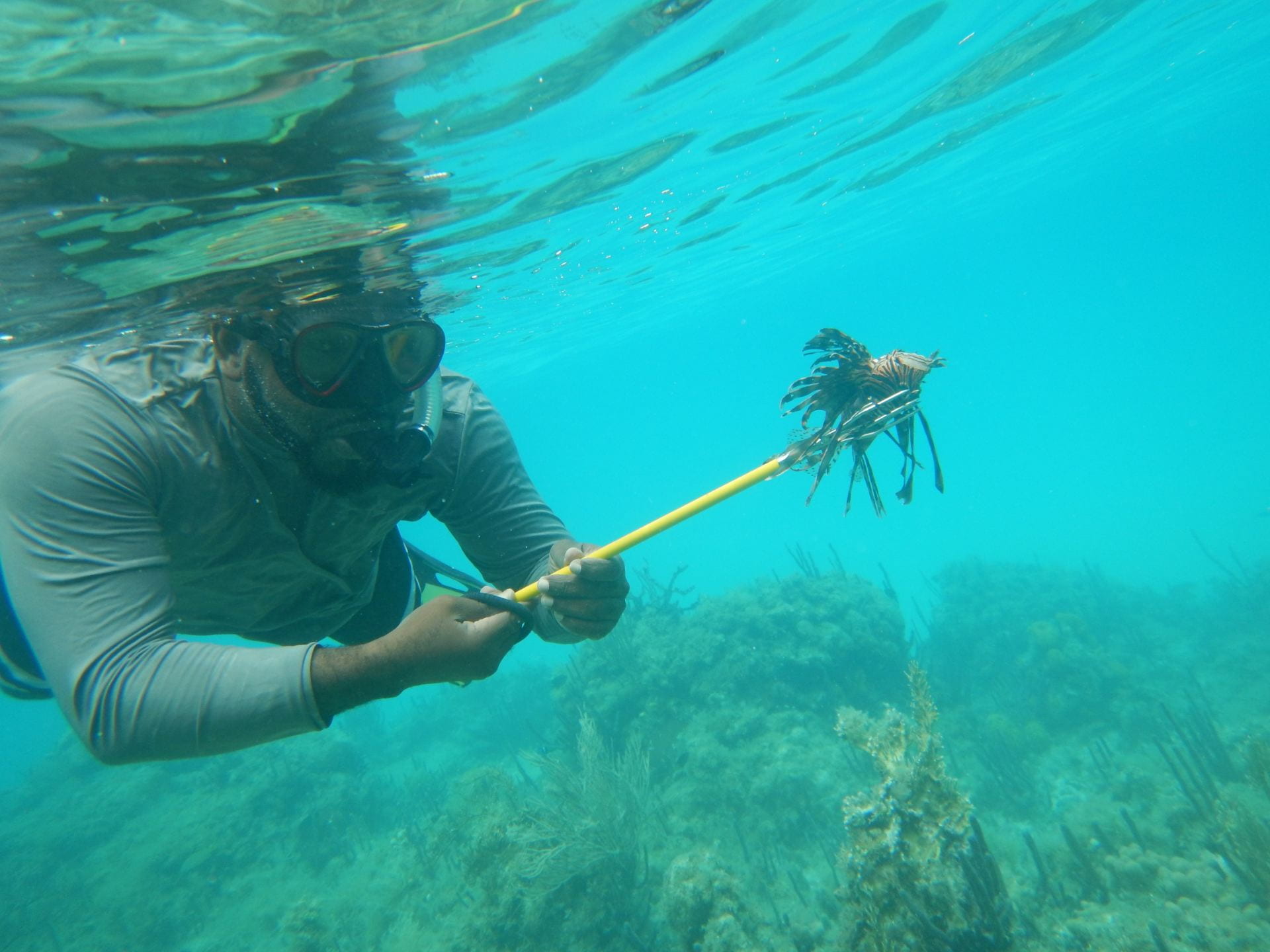
We then had a snack of lionfish ceviche, made with the same fish we dissected, and took a break to pack until dinner.
In the evening we had a brief social gathering on the dock, looking back on our experiences. But it wasn’t just socializing—Amanda tied her dive light to the dock and attracted lots of tiny shrimp. This attracts fish that feed on the shrimp, and fish that will eat those larger fish. Eventually we saw a few stingrays and a shark, all right under our feet on the dock!

